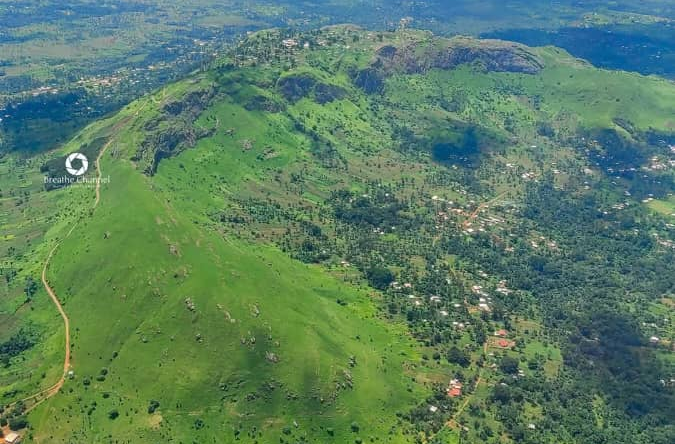Our Tradition
Balikumbat, located in Cameroon’s Northwest Region, is one of the prominent Bali Chamba chiefdoms in the Bamenda Grassfields. Its origins trace back to the early 19th century, following the fragmentation of a significant confederation led by the Chamba leader Gawolbe.
Origins and Migration
After Gawolbe’s death around 1830, a succession crisis ensued among his offspring, leading to the division of his followers into several factions. Each faction, led by Gawolbe’s children, established distinct chiefdoms:
- Bali-Kumbat: Founded by Prince Galabe, Gawolbe’s fourth son
- Bali-Gangsin: Led by Samsu, the eldest son
- Bali-Nyonga: Established by Princess Nanyonga for her son Nyongpasi, who later became Fon Nyonga.
- Bali-Gham: Formed by Galanga, another of Gawolbe’s sons.
Prince Galabe, a formidable soldier and treasurer of his father’s empire, refused to submit to his elder brothers. He led his supporters from Bafu-Fondong to the Ndop plains in the Bamenda Grassfields. Along their migration route, they engaged in raids against groups such as the Bambili and Bambui. Upon reaching the plateau occupied by the Bamunkumbit people, Galabe employed strategic tactics to occupy the area without direct confrontation, establishing the Balikumbat chiefdom around 1830.
Royal Succession and Leadership
Initially, from 1830 to 1920, Balikumbat practiced collateral succession, where leadership passed among cousins. This approach often resulted in short reigns. In 1920, following the death of Ga Nyamyin II, British colonial authorities and local kingmakers intervened to establish a direct hereditary system. Consequently, Galabe III ascended the throne, marking a shift in succession practices. His reign faced challenges, notably from Doh Mundem, a cousin of the deceased fon, but with support from the community and allies from Bamunka, Galabe III maintained his position.
Balikumbat Succession History:
Below is a detailed succession history from the founding Fon to the present:
- Fon Galabe I (c. 1830 – 1845): As the founder of Balikumbat, Fon Galabe I led his followers to establish the chiefdom around 1830. His leadership laid the foundation for the community’s cultural and political structures.
- Fon Gagwanyin I (c. 1845 – 1875): Succeeded Fon Galabe I and continued to consolidate the chiefdom’s influence in the region.
- Fon Gahnyamyi I (c. 1875 – c. 1900): Took over leadership during a period of significant regional changes, including the advent of colonial influences.
- Fon Gahnyamyi II (c. 1900 – 1920): His reign marked the end of the era where succession occurred among cousins, leading to shorter reigns.
- Fon Galabe III (1920 – 1977): With the intervention of British colonial authorities, Fon Galabe III’s enthronement marked the beginning of direct hereditary succession. His reign saw significant developments in Balikumbat’s administrative and social structures.
- Fon Doh Gahgwanyin III (1977 – 2012): A dynamic leader, he was instrumental in promoting agriculture, education, and infrastructural development. Beyond his traditional role, he served as a Member of Parliament and Mayor. His tenure also faced challenges, notably his involvement in political controversies.
- Fon Bah Gah Nyamnyin III (2012 – Present): The current Fon, enthroned after the passing of Fon Doh Gahgwanyin III, has navigated the chiefdom through contemporary challenges, including the Anglophone Crisis. His leadership continues to uphold the traditions and cultural heritage of Balikumbat.
This succession history reflects Balikumbat’s resilience and adaptability under the stewardship of its Fons, each contributing to the chiefdom’s legacy in distinct ways.
Cultural and Social Aspects
Balikumbat’s society is rich in cultural traditions. The palace serves as the center of political, economic, and socio-cultural activities. Traditional practices, such as midwifery, play a significant role in the community, reflecting deep-rooted customs and knowledge systems.
Recent Developments
In recent years, Balikumbat has experienced tensions related to the broader Anglophone Crisis in Cameroon. In September 2018, separatist fighters captured the town, hoisting the Ambazonian flag over administrative buildings. While they later withdrew from the town, they maintained a presence in the surrounding areas. In January 2020, local villagers, frustrated with separatist excesses, confronted a separatist base, leading to the seizure of weapons and the arrest of fighters.
Balikumbat’s history is a testament to the resilience and adaptability of its people, navigating challenges from colonial interventions to contemporary conflicts while preserving their rich cultural heritage.
By Chief Dr. Semga Alexander
